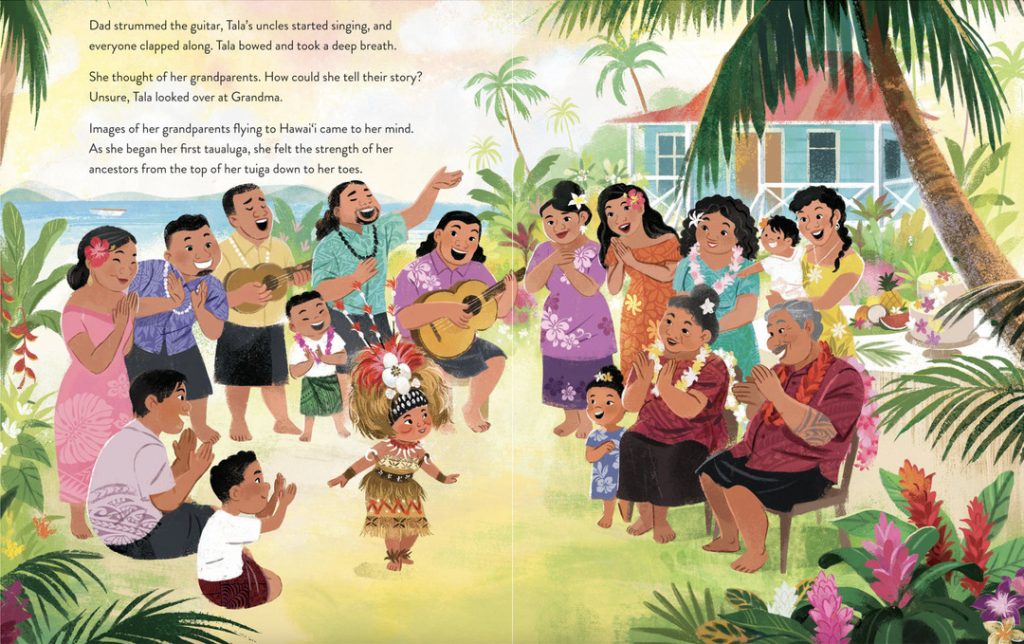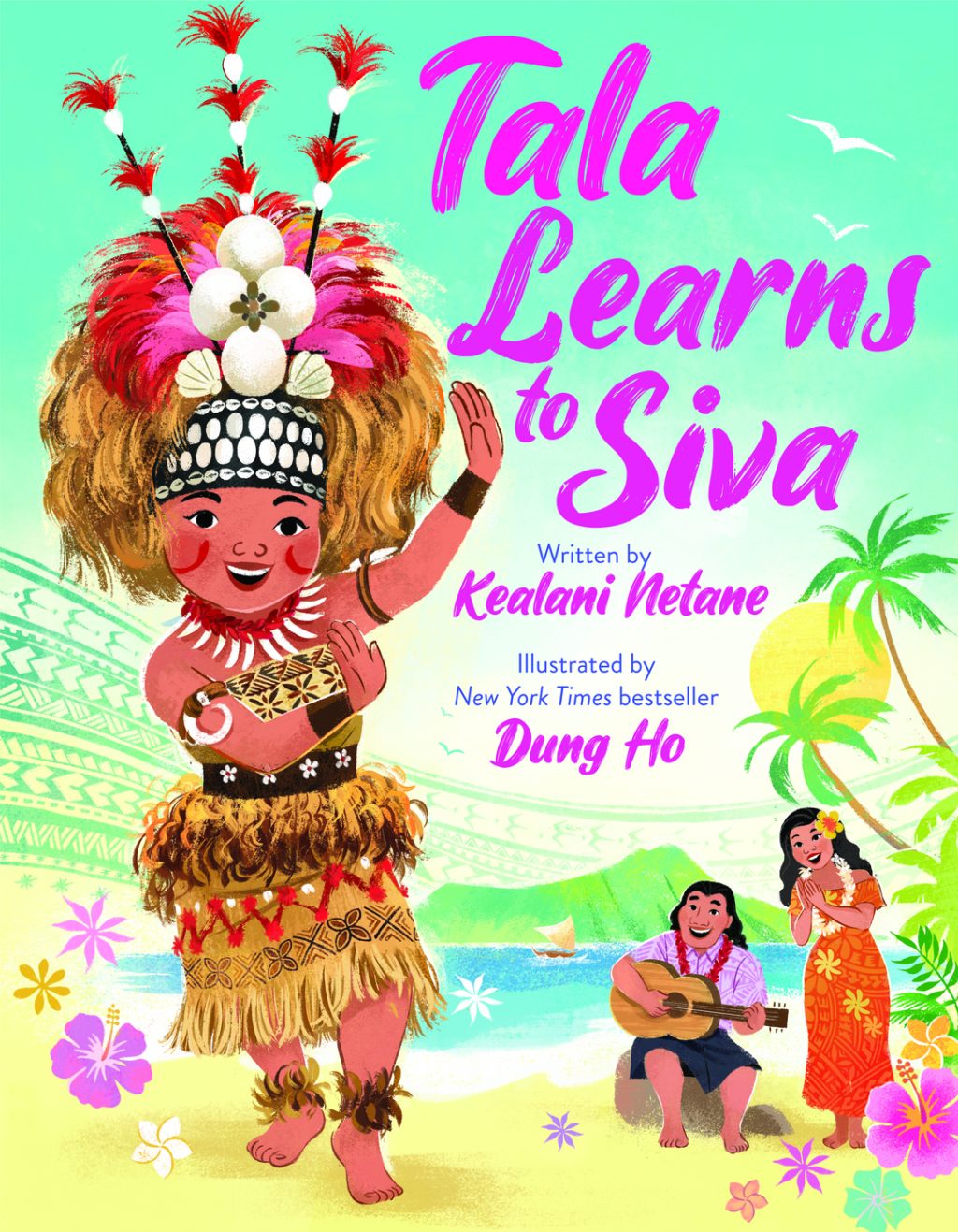I like to think I’m a wordsmith. I can often take an idea and work to find the best words to tell a story I hope my young readers will love.
I hope my young readers will love.
But a children’s book is way more than words. Beautiful illustrations are key to making well-written stories and turning them into visual magic for young readers.
Talented Native Hawaiian illustrator Malia Pila is one such magician. Her charming, gorgeous images have a cinematic aesthetic that young readers and their grownups love.
We are so pleased to talk story with Malia today.
Aloha e Malia! For those who haven’t met you, could you please tell us a little about yourself?
My name is Malia Pila, and I’m an illustrator working primarily in picture books these days, but I have also worked in visual development for animation! I enjoy exploring different media and styles with my artwork whenever I can as well as researching niche things like historical costuming and the mythology of different cultures.
My biggest supporter for nearly 15 years now has been my (soon-to-be) husband. My career path has not been very clear or linear and even when I’ve had moments of self-doubt, he has always been at my side to help me back onto my feet and find inspiration again.
Congratulations on your engagement! Where did you grow up?
I grew up in a handful of different places. A large part of my childhood was spent between Hilo where my father is from and Kona, but we eventually moved to the mainland, and I spent my teen years in places like Florida and Arkansas.
What has been your journey to becoming a professional illustrator? Why did you become an illustrator/artist? Have you always wanted to create art?
I have always had a desire to create art, but it took some time to land specifically on “professional illustrator.” My older sister introduced me to drawing when I was about 6, and while I’m sure I drew plenty before then, I specifically remember her introduction having a profound impact on me and igniting a spark that has just refused to die down since.
I’ve been lucky that my family has never put down my dreams or insisted I pivot to something else completely. So by the time I made it to university, I had refined an incredibly vague career plan of “ARTIST” into a more specific goal to work in the animation industry. I stuck with that ultimately, but I also found myself exposed to new things that really began to turn my head like illustrating for picture books and studying art history.
After university, I was left in a place I think a lot of fresh graduates are in after art school. There is so much uncertainty in many creative industries, so it can be overwhelming. I’ve tried to just focus on what makes me happy to create and that has really led me to where I am now.
What kinds of illustration work have you done? What do you enjoy most about illustrating, especially for a young audience? What are some of your greatest challenges?
I enjoy illustrating for the sheer enjoyment of creating, to be honest. It is so fun to think of something that perhaps no one has ever thought of before or, alternatively, what many many people have thought of in very different ways, and see it put down on paper or canvas. When it comes to illustrating for a young audience specifically, what I love about it is trying to inspire the same thoughts and feelings I once had as a child looking at artwork in books or rummaging through different covers at the library.
That itself sort of becomes my greatest challenge, too. I want to convey so much with my art sometimes that I have to sit back and pick what to include so as not to overwhelm an individual illustration or muddy a concept and message.
Do you have a favorite medium to work with? Why is that?
I recently picked up gouache painting again, and while I’m still refamiliarizing myself with the medium, I’d say it is becoming a new favorite. For the most part, I’ve worked primarily digitally as an illustrator until recently, and while I love all that digital work offers in the way of flexibility and ease, I really enjoy getting my hands back on something more tactile and messy like paints.
Can you share a bit about what you’re working on now? What’s your inspiration?
Something that has always inspired me is my childhood growing up in Hawaiʻi. I have such fond memories of sitting on my grandpa’s lanai eating manapua, gawking at tide pools, and playing with sleeping grass as a kid. On the flip side, leaving all of that and moving to the mainland was incredibly difficult for me. I’m just starting out with the idea, but I’m hoping to play with it a little and see if these inspirations can come together as either a series of illustrations to speak on these experiences or, who knows, maybe even a picture book!
That sounds so fun! What are your hopes and dreams for the year and beyond in terms of your career and what you do you hope for your career in the future?
I’m starting 2025 with a lot of hopes! I recently signed with an agent so I’m looking forward to debuting on new books and other projects in the new year. My dream for the next year is to build a good foundation for myself as a professional illustrator and past that? I would love to explore the possibility of publishing a book as an author/illustrator myself. To be added alongside other published Pacific Islanders would be such a dream!
What advice would you give an aspiring illustrator?
It is okay to pivot. It is okay to take a break, too! I went through several years of my life when creating art was not a priority for me because I was dealing with some very difficult things. I felt bad about this for a while but honestly, a break was what I needed and I do not feel as if I irrevocably damaged my career by taking one as I eventually came back rested and reenergized and caught right back up to my peers. Sometimes taking a chance to sit back and take in other media can be so helpful when you’ve been creating endlessly for a while and feel burnt out.
What kinds of books do you enjoy reading? Any favorites?
I read a lot of historical fiction and some of my favorite books tend to fall into that category. 2024 was unfortunately a slow reading year for me but one of my favorites that I finished was The God of Endings by Jacqueline Holland.
I’m hoping to read so much more in 2025. Specifically, I want to focus on reading more books by other Pacific Islanders. In the past, I’ve found it a little difficult to track down titles but thanks to resources like Pacific Islanders in Publishing, I have a growing reading list to work through.
What’s your online presence?
My portfolio website is maliapila.com. I’m a little more active these days on Instagram (or I try to be, anyway) and can be found there at maliapila.art. I welcome anyone that wants to chat or connect!
Mahalo nui, Malia, for talking story with us! We’re looking forward to hearing more from you soon! To learn more about Malia and see her wonderful illustrations, visit her website, Malia Pila.com, and follow her on Instagram at maliapila.art. Malia is represented by James McGowan at BookEnds Literary Agency.
Images courtesy of Malia Pila.















